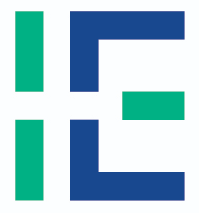Professor Erik Meijering is the Technology Lead for the new Image Analytics Research Pillar. We asked Erik to tell us a little bit about himself and his research.
Please tell us a little bit about yourself
My academic roots are in electrical engineering (MSc, Delft University of Technology, the Netherlands) and computational medical image analysis (PhD, Utrecht University, the Netherlands). But my fascination for computers and their potential to improve many facets of life started much earlier. As a young teenager I taught myself various programming languages and how to develop software. During my studies I figured if there’s anything computers can and should be used for, it is to improve human health and wellbeing. On my journey to help improve medical imaging-based diagnostics, I have worked at technical institutes (EPFL in Switzerland as a postdoc) as well as at university medical centres (Erasmus MC in the Netherlands as an Assistant Professor and later Associate Professor). In 2019 I joined UNSW, where I am now a Professor of Biomedical Image Computing in the School of Computer Science and Engineering. So altogether I guess this means I am an electrical-biomedical-computer engineer-scientist.
What is Image Analytics?
In a broad sense it refers to the systematic computational analysis of image data and the statistical analysis of information extracted from the images. In the context of IHealthE the focus is of course on medical images and associated meta-data and their analysis for the purposes of diagnosis, screening, and monitoring. Some of the main visual tasks to be solved include detecting and segmenting regions or anomalies of interest in the images and measuring them quantitatively for downstream analysis. While this can (and in many cases still is) done by hand, computer vision methods and tools enable medical experts to automate, speed up, and improve their workflow, increasing the accuracy and throughput of diagnostics. More and more, these methods are based on artificial intelligence (AI) approaches using deep learning of artificial neural networks.
What are your ambitions for the Image Analytics Pillar at Tyree IHealthE?
The main ambition is to catalyse innovation in developing computational solutions to unmet needs in medical imaging to improve health care. An important part of that will be to get medical experts, computer scientists, and biomedical engineers to talk more and identify the real issues and ensure the technology addresses actual rather than hypothetical needs. Many methods for medical image analytics are being developed and published every month in the scientific literature, but to make them work well and get them into the hands of practitioners is far from trivial. It takes more than coming up with an idea and testing some experimental implementation of it on a public dataset to show it could work. Bridging the gap to clinical practice also requires getting the right data infrastructure, computing infrastructure, and professional software development in place. IHealthE is well positioned to consider all these aspects.
What do you think will enable health engineering projects and innovations to succeed?
Probably the most important thing is to build strong collaborations with open-minded experts from all disciplines involved. In my own experience, successful multidisciplinary projects all start with a genuine interest in learning each other’s language in looking at a given problem, which more often than not sparks new ideas that no one would have come up with alone. There is an ocean of technological ingredients and possibilities we can tap into. We just need to figure out how to integrate and implement them in a way that best serves the patient. Another very important aspect is to teach potential users how to leverage available technologies. Literature is full of great ideas that nobody knows about. So, in one sentence, it is all about collaboration, communication, imagination, implementation, and education.
Do you have any resources or networks that you can share with the readers?
The field of medical image analytics has changed significantly in the past decade. This is not only due to improvements in imaging technologies, computing hardware, and AI solutions, but also because researchers are increasingly joining forces in a variety of community efforts to develop best methods and practices. Examples of initiatives I am personally involved in include organising international competitions to benchmark existing and emerging biomedical image analysis methods (https://grand-challenge.org/), developing standards for method evaluation via special interest groups of the Medical Image Computing and Computer Assisted Intervention Society MICCAI, and translating frontier AI technologies into real-world health services as promoted by the Australian Alliance for Artificial Intelligence in Healthcare AAAiH.
Connect with Erik
Email: erik.meijering@unsw.edu.au
Website: https://imagescience.org/meijering/
LinkedIn: https://www.linkedin.com/in/emeijering/

